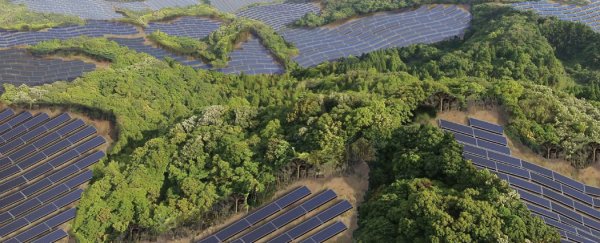During real estate booms, developers have a tendency to build more than is necessary. When those booms go bust, we get to sit back and watch as people come up with creative uses for all that waste.
This is what's happening in Japan, where developers built too many golf courses over the last few decades after demand shot up in the 1980s. Now the industry is in decline, with participation in the sport down 40 percent from the 1990s, and abandoned golf courses are starting to pop up.
Kyocera's solution: turn the abandoned green space into solar farms. Japan has been hungry for alternative energy ever since the 2011 Fukushima disaster made nuclear power an unattractive option in the country, and golf courses just happen to be perfectly suited for solar power - they're large open spaces that often get lots of sunlight.
Kyocera's first project, now under construction, is a 23 megawatt solar plant on a golf course in Kyoto prefecture. When it goes live in 2017, the plant will produce enough power for about 8,100 households.
The company is also developing a 92 megawatt solar plant - generating enough energy for over 30,000 households - on an abandoned golf course in Kagoshima prefecture. No word on when that project will go live.
For Japan, using golf courses for solar power makes a lot of sense. But in other countries where golf is on the downswing, like in the US, suburban courses could have equally useful second lives as green spaces or infill development.
In sprawling suburbia, these large swaths of land could house densely-packed residential developments, shops, community centres, libraries, schools, and all sorts of other buildings that could help rebuild a long-lost sense of community.
This article was originally published by Business Insider.
More from Business Insider:
